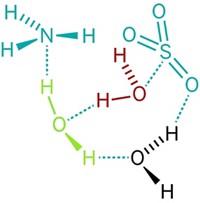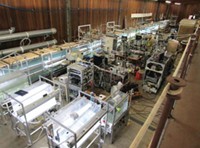Advertisement
Grab your lab coat. Let's get started
Welcome!
Welcome!
Create an account below to get 6 C&EN articles per month, receive newsletters and more - all free.
It seems this is your first time logging in online. Please enter the following information to continue.
As an ACS member you automatically get access to this site. All we need is few more details to create your reading experience.
Not you? Sign in with a different account.
Not you? Sign in with a different account.
ERROR 1
ERROR 1
ERROR 2
ERROR 2
ERROR 2
ERROR 2
ERROR 2
Password and Confirm password must match.
If you have an ACS member number, please enter it here so we can link this account to your membership. (optional)
ERROR 2
ACS values your privacy. By submitting your information, you are gaining access to C&EN and subscribing to our weekly newsletter. We use the information you provide to make your reading experience better, and we will never sell your data to third party members.
Environment
Airborne Aldehydes Promote Cloudy Skies
Small organic molecules stimulate water condensation on aerosol particles
by Jyllian Kemsley
February 11, 2013
| A version of this story appeared in
Volume 91, Issue 6
Clouds play an important role in Earth’s climate by reflecting sunlight. But the intricate details of how clouds form remain uncertain. A new study reveals that when acetaldehyde molecules (CH3CHO) in the atmosphere absorb onto inorganic aerosol particles, the aerosols more readily take on water to form cloud droplets. Incorporating this knowledge into climate models would help make them more accurate, according to Columbia University’s V. Faye McNeill and Georgia Tech’s Athanasios Nenes, who led the study (Proc. Natl. Acad. Sci. USA, DOI: 10.1073/pnas.1204838110). The scientists used a laboratory cloud chamber to expose ammonium sulfate aerosols to different small aldehydes. These species form in the air through oxidation of natural and man-made compounds. The researchers then watched for water vapor to coalesce around the aldehyde-modified aerosols to form cloud droplets. They found that acetaldehyde increases the aerosols’ ability to attract and hold water—their hygroscopicity—by 20%. At that rate, the number of cloud droplets in the atmosphere would increase by 10 to 20%, the researchers note.





Join the conversation
Contact the reporter
Submit a Letter to the Editor for publication
Engage with us on Twitter